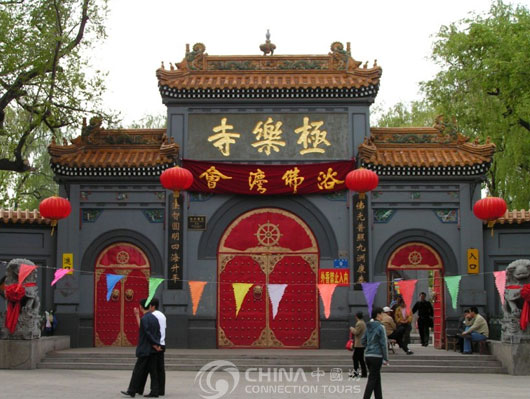 The Jile Temple is located on the East Straight Avenue of Nangang District, Harbin, Helongjiang Province. It is honored as one of four well-known temples in Northeast China. The temple is characterized by its age, its architecture and its lay out and all are designed strictly after the Chinese Buddhist style. The temple is therefore looked upon as the model for visitors to understand and appreciate the art of Chinese temple building.
The Jile Temple is located on the East Straight Avenue of Nangang District, Harbin, Helongjiang Province. It is honored as one of four well-known temples in Northeast China. The temple is characterized by its age, its architecture and its lay out and all are designed strictly after the Chinese Buddhist style. The temple is therefore looked upon as the model for visitors to understand and appreciate the art of Chinese temple building.
The temple, covering an area of 57,000 square meters, was built in 1920 by Master Yanxu, a famous disciple of the Tiantai Buddhist clan. The complex of the temple consists of the Heavenly King's Hall, the Grand Hall, the Three Bodhisattva Hall, and the Buddhist Book Storage Hall. The main halls are fronted by a Drum Tower and a Bell Tower and other subordinate structures. At every sunrise and sunset, the monks will beat the drum and the bell of two towers for asking the other monks to do their morning and the afternoon worships. The citizens in Harbin will start their daily life according to the beating times. Sometimes, monks could also beat the drum and the bell during the temple ceremonies. The most imposing building of the temple is probably the Futu Pagoda on the eastern tip of the grounds, a 37 meters tall stone structure building dotted with caves engraved with Buddhist embossed sculptures. At the bottom of the pagoda is a large hall with Buddhist statues.
Every 8th, 18th and 28th of April according to the lunar calendar, major Buddhist festivals are held in the temple. Massive rites and celebrations are organized, while the temple area is surrounded with bazaars and various folk activities.

